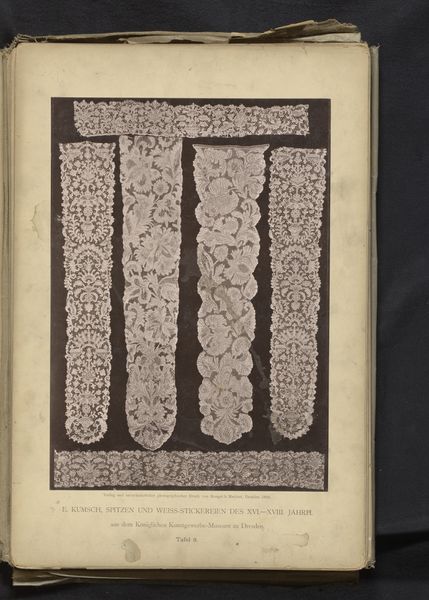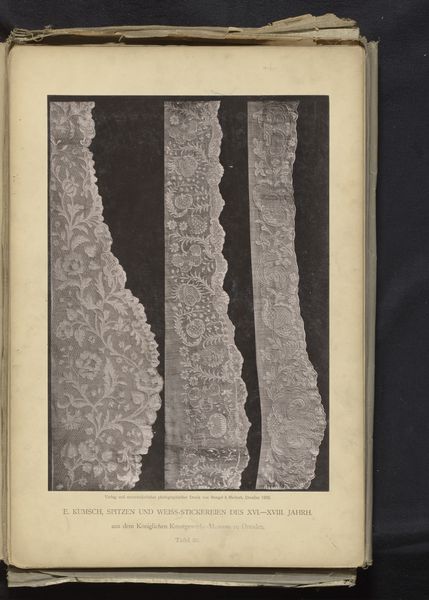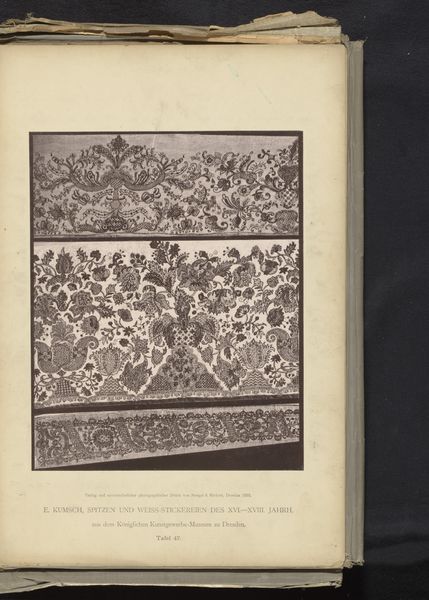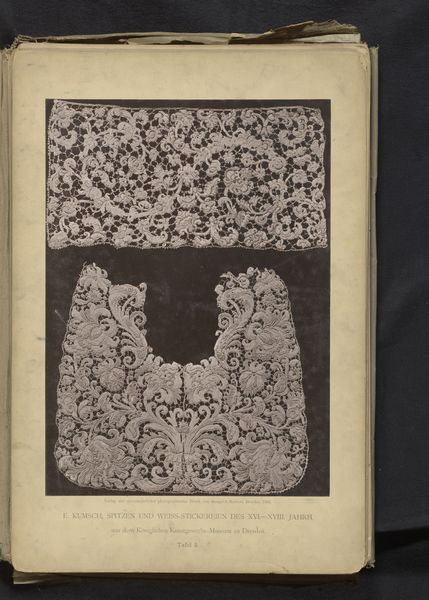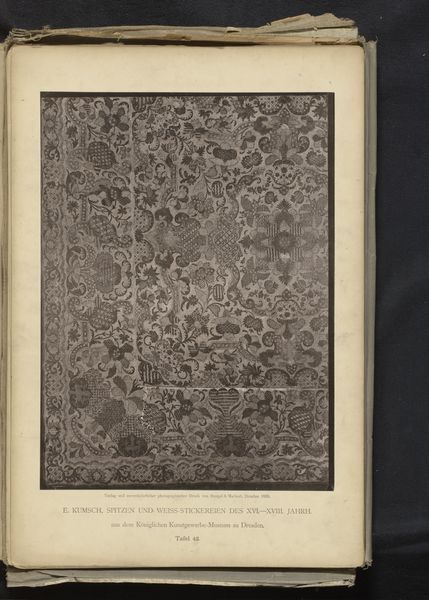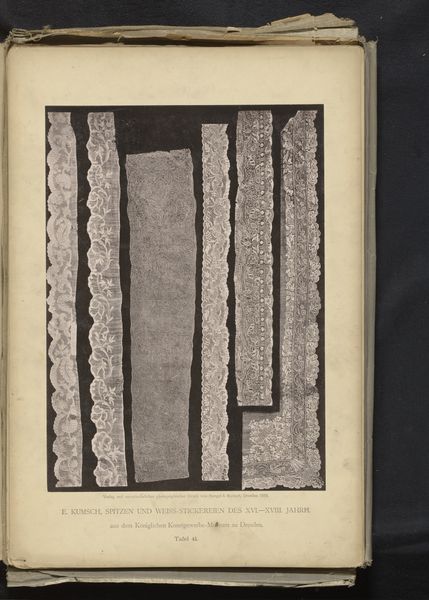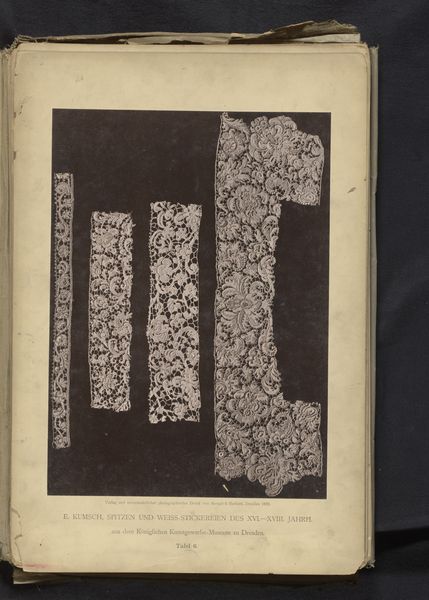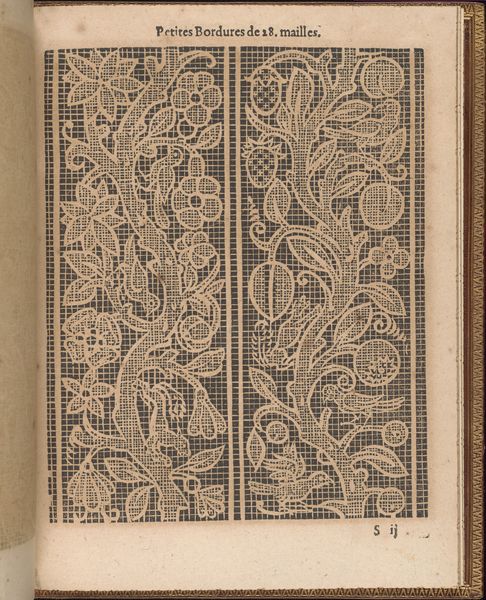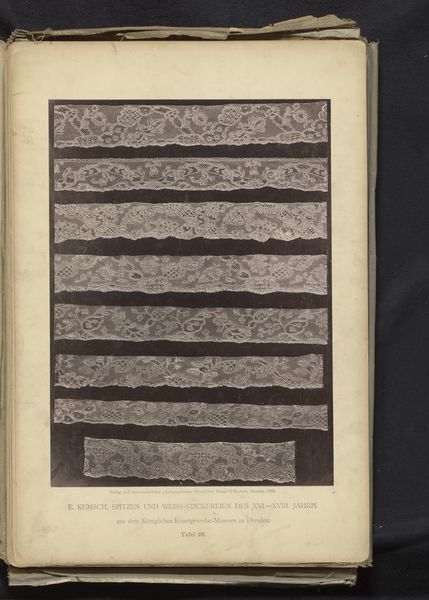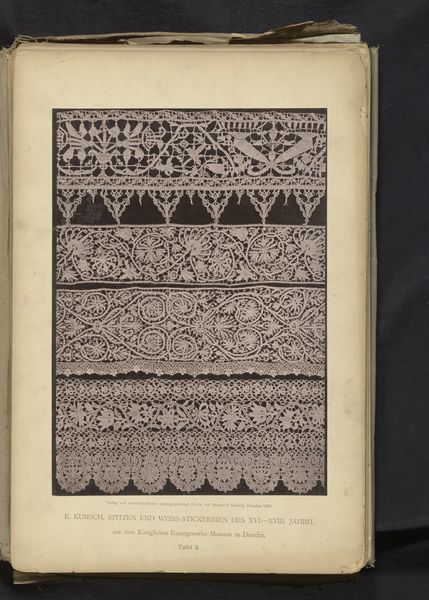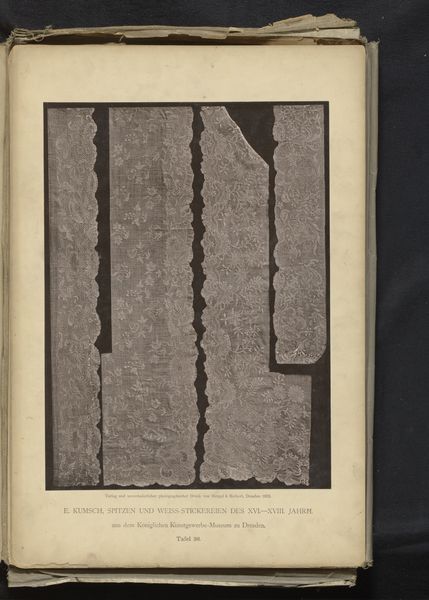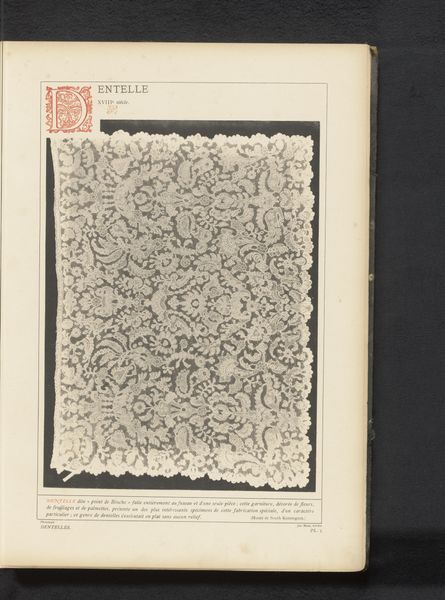
Twee stukken 18de-eeuws Brussels kant uit de collectie van het Kunstgewerbemuseum in Dresden, Duitsland 1888
0:00
0:00
drawing, print, textile, paper
#
drawing
# print
#
textile
#
paper
#
historical fashion
#
decorative-art
Dimensions: height 360 mm, width 230 mm
Copyright: Rijks Museum: Open Domain
Curator: We are looking at a print from 1888, held here at the Rijksmuseum, entitled "Twee stukken 18de-eeuws Brussels kant uit de collectie van het Kunstgewerbemuseum in Dresden, Duitsland.” Editor: My first impression is of exquisite intricacy, almost impossibly detailed. It reminds me of a baroque garden plan, flattened and presented in monochrome. Curator: Indeed. It depicts two patterns of 18th-century Brussels lace, pieces acquired from the Dresden museum. The composition relies on the interplay between dense floral motifs and delicate negative space. Consider the fine lines defining each tendril and bloom. Editor: But beyond that purely aesthetic achievement, what do these fragments tell us about the wider world from which they came? The luxury of lace during the 18th century wasn’t just a sign of personal wealth; it indicated specific status and played into highly regulated fashion trends of aristocratic European society. Curator: I concur entirely. Examining the technical skill involved in producing such complex patterns is essential. Look at how different techniques have been used to build rhythm and create focus for the eye. We see complex interweaving—structural beauty within practical craftwork. Editor: Lace was often made by women, sold to men of the court, gifted among royalty. It played a significant role in political gifts, and helped solidify both soft and hard powers between empires. Seeing these examples isolated from that history somehow misses its original life. Curator: Perhaps, but its formal perfection is not diminished by the passing of centuries, nor divorced from purpose. Note how its two-dimensional quality emphasizes shape and proportion in abstract terms divorced from a three-dimensional embodiment. We can observe an object purely for line and tone. Editor: I see the tension between inherent worth and a historical narrative here as productive; that inherent artistry is enriched by understanding its societal context rather than lessened. It serves to better reveal how powerful symbols of culture truly take form. Curator: Perhaps, that interplay creates opportunity for all levels of study and understanding that we find here today. Editor: Precisely. Let us each remember that we play equally crucial roles in experiencing any object’s complete resonance.
Comments
No comments
Be the first to comment and join the conversation on the ultimate creative platform.
